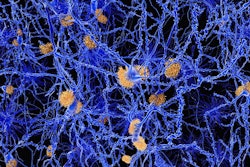
PET images have uncovered consistently greater accumulation of tau protein in the brains of women compared with men, bolstering the current knowledge on how one's gender might affect a progression to dementia, according to one study presented at this week's Alzheimer's Association International Conference (AAIC).
Understanding differences between women and men in relation to their chances of developing cognitive decline, Alzheimer's disease, and neurodegeneration could help clinicians customize prevention strategies for different populations with these conditions.
"The majority of people living with Alzheimer's are women, and it's imperative we understand why," said Maria Carrillo, PhD, Alzheimer's Association chief science officer, in a statement. "The research reported at AAIC gets us one step closer to answering that question by identifying specific biological and social reasons why Alzheimer's is different in men and women."
Previous research has shown that amyloid deposition can be an early indication of pending Alzheimer's, as is the abnormal accumulation of tau proteins. When these proteins group together, they cause the death of brain cells. Given the differences in how men's and women's brain regions are connected, the location of excessive tau proteins also could be the reason why women are more likely to develop Alzheimer's than men, some theories postulate.
In one AAIC 2019 study, researchers from Vanderbilt University Medical Center compared tau protein levels in 60 women and 101 men with mild cognitive impairment against 178 healthy women and 123 healthy men. Sepideh Shokouhi, PhD, assistant professor of psychiatry and behavioral sciences at Vanderbilt, and colleagues used PET imaging to create a model of the brain segmented into networks of tau-connected regions.
For each of the four groups, the team's tau-connectivity network model targeted the following:
- The overall number of network connections
- Areas within the brain with higher tau connectivity than the rest of the brain
- Regions that influenced the spread of tau across different communities
The researchers then examined these networks to identify global pathways of tau accumulation to identify any differences between men and women and found that the tau network of women with mild cognitive impairment (MCI) had a greater density of tau protein and greater brain-wide tau burden than any of the other three groups.
| Tau protein density differences in men vs. women as seen on PET | ||||
| Normal control subjects | Subjects with MCI | |||
| Men | Women | Men | Women | |
| Tau protein network density | 0.11 ± 0.02 | 0.12 ± 0.02 | 0.21 ± 0.02 | 0.38 ± 0.03 |
The researchers also observed several key brain regions -- namely, the parahippocampus, superior parietal, insular, and superior temporal -- in healthy women that connected different brain areas within the network. Shokouhi and colleagues suggested that this configuration might lead to an accelerated spread of tau protein throughout the brain, which in turn could lead to more rapid cognitive decline.
"The differences that we observed indicate the strong possibility that there are sex differences in the structural and functional connections in the brain, which may contribute to women's increased risk for Alzheimer's," Shokouhi said. "This study has implications for the possibility of creating sex-specific risk-reduction strategies and preventive interventions."



















